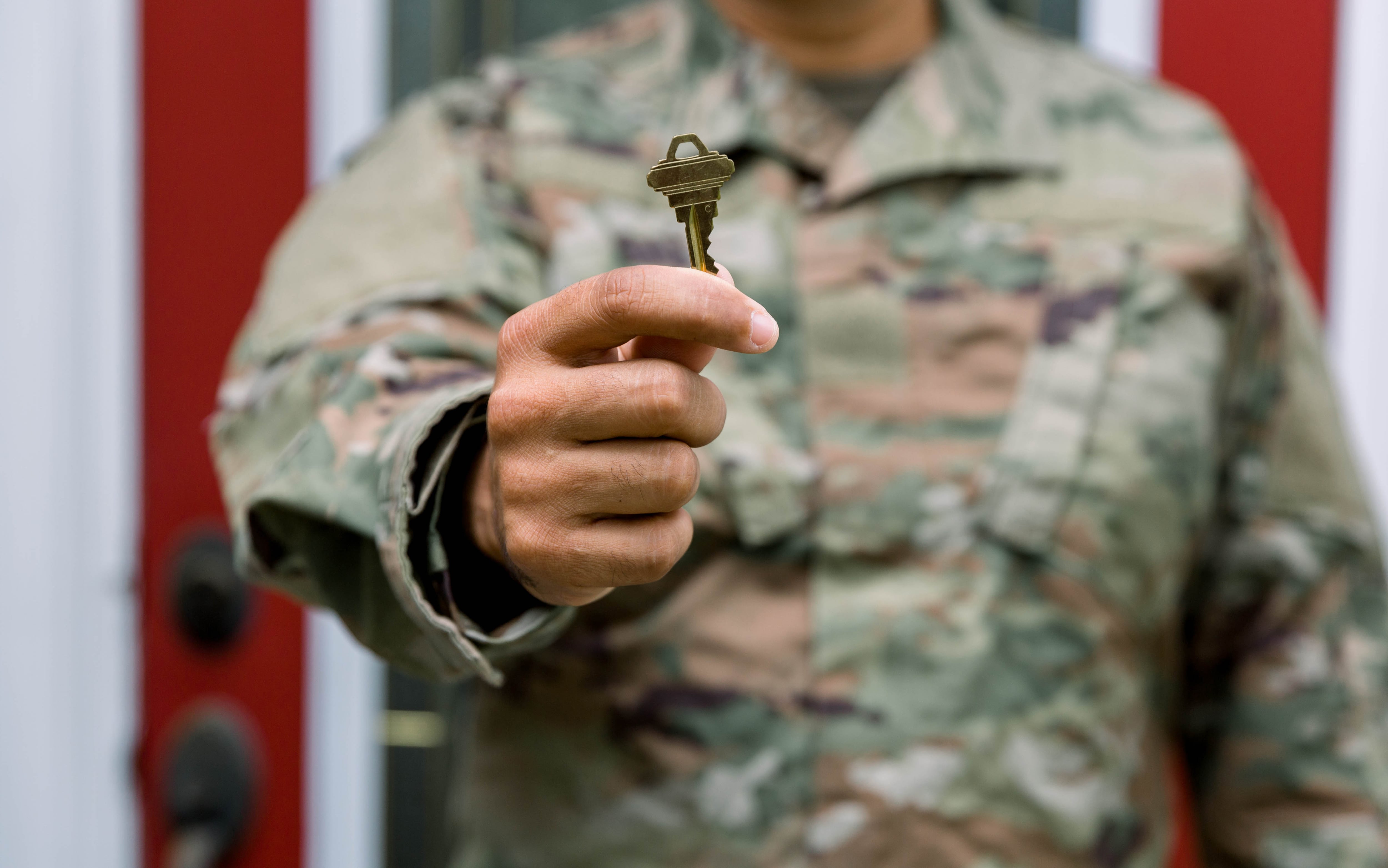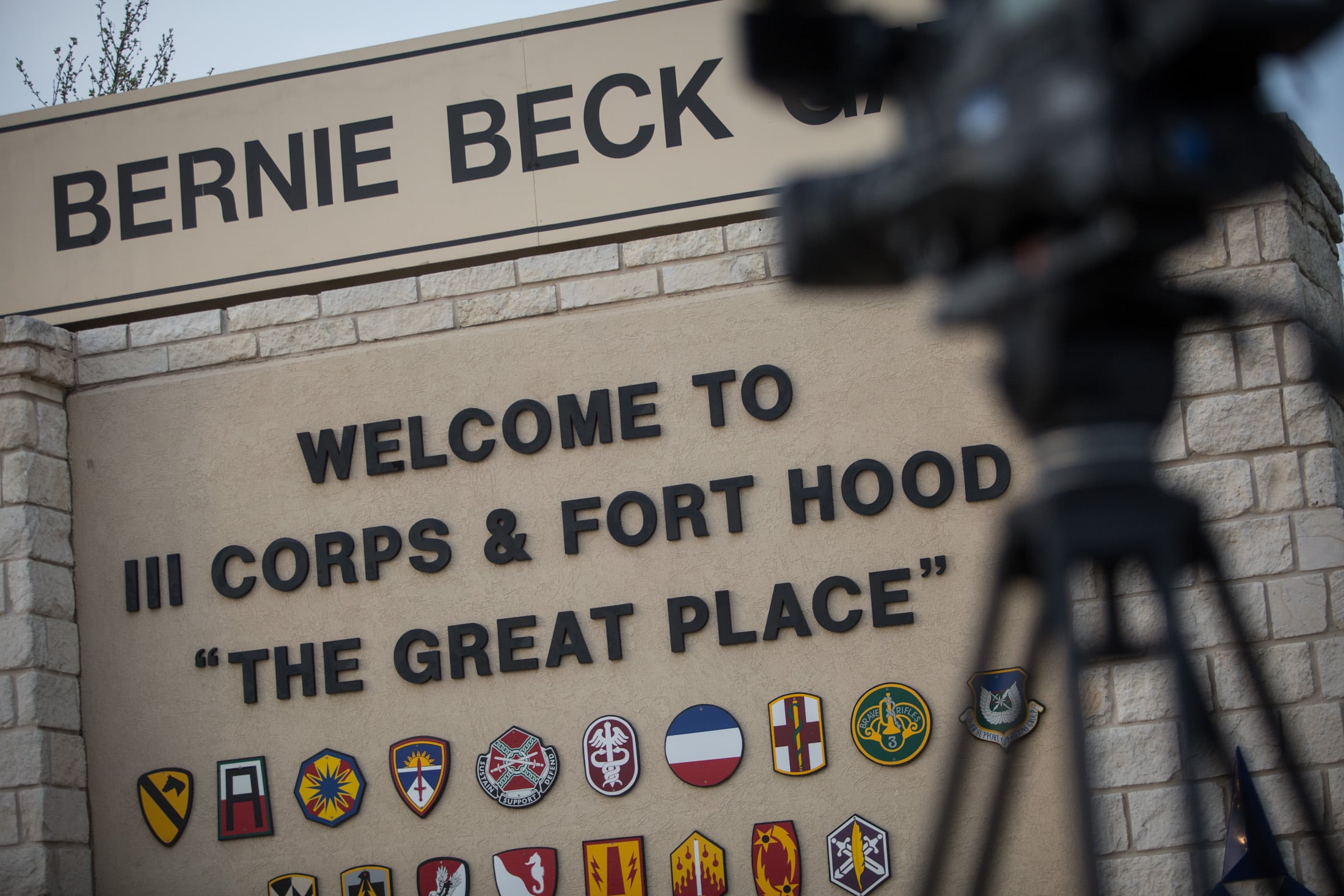As technologies advance, more tools are added to the arsenal of those cracking down on drug trafficking. But with each advancement, traffickers evolve their own tactics for avoiding detection.
Among smuggling efforts, drug traffickers from South America have begun to use semi-submersible submarines — known as narco subs — in an effort to elude law enforcement.
Cpt. Nathan Moore, commander of the U.S. Coast Guard Cutter Stratton, has been on the front lines of international efforts to intercept narco subs long before the drugs reach distributors.
In the Eastern Pacific, Moore and the crew of the Stratton have deployed numerous times, tasked with stopping at-sea drug trafficking between Colombia and Mexico.
"We know that this area is so large and they use that to their advantage," Moore told Navy Times.
That large area is a major trafficking route for cocaine. In fact, sea travel often makes up about 90 percent of trafficking routes into the U.S.
"[T]he majority of illicit drugs that are transported out of Colombia are done so by a maritime conveyance," said Moore. "If you look at a map you can fit the continental United States into that part of the ocean."
The Stratton has made several major hauls of cocaine in recent years, including a 2015 seizure of a narco sub that was carrying 12,000 pounds.
This remains the largest narco sub cocaine bust by the Coast Guard in the Pacific and was recently featured in the Science Channel’s new series, "Outlaw Tech." The Stratton returned from a 98-day deployment in April, during which it seized 4,000 pounds of cocaine with a value of about $50 million.
The Coast Guard’s role in the Eastern Pacific is part of a broader drug enforcement operation overseen by the Department of Defense’s Southern Command — or SOUTHCOM. Joint Interagency Task Force South — JIATF South — combines military, law enforcement agencies and members of the intelligence community with international partners in the fight to intercept large shipments of drugs.
Different than the domestic drug policy reform and "war on drugs" conversation, the efforts of JIATF South are more geared toward threats to national security.
"[Drug traffickers] use cocaine as a cash crop to make money for [transnational organized crime networks] which then funds cybercrimes, human trafficking, terrorism, a variety of other organized crime activities," said Moore.
Proceeds from illegal drug sales have also been used to bribe corrupt government officials.
"By interdicting these boatloads of cocaine, we are cutting off the cash to these organizations that they need to do their illegal activities," said Moore, "so it’s incredibly important stuff."
Cocaine confiscated by the Coast Guard thus far is worth billions, according to Lt. Donnie Brzuska, public affairs officer for the Coast Guard Pacific Area.
"We removed nearly $6 billion worth of cocaine wholesale, which will never fund the countless illegal activities of gang lords, drug kingpins and other violent heads of transnational organized crime networks," said Brzuska.
On the street, cocaine and other drugs are often cut with additives in order to expand the quantity available for sale. An advantage of intercepting it at sea is that it tends to be uncut, coming straight from the jungles of Colombia.
"When we talk about 16,000 pounds of cocaine on one of these submersibles, that’s almost pure, almost the raw cocaine that then is expanded six, seven, or eight times of volume before it actually gets to the streets of America," said Moore. "It’s more effective to catch 16,000 pounds on our turf, on the water before it expands to seven or eight times that amount at the southern border."
Narco subs typically have around four crew members and can make journeys of over 1,000 miles in open sea. With the vessels essentially jam-packed with cocaine, there is minimal room for the engine compartment and crews often sleep on bunks atop bundles of cocaine. To avoid detection, narco subs only move at night to prevent creating a visible wake that can be seen by counter-narcotic aircraft.
P-3 Orion aircraft used by the U.S. Navy and Customs and Border Protection has onboard sensors capable of picking up heat signatures, as well as magnetic anomalies in the water.
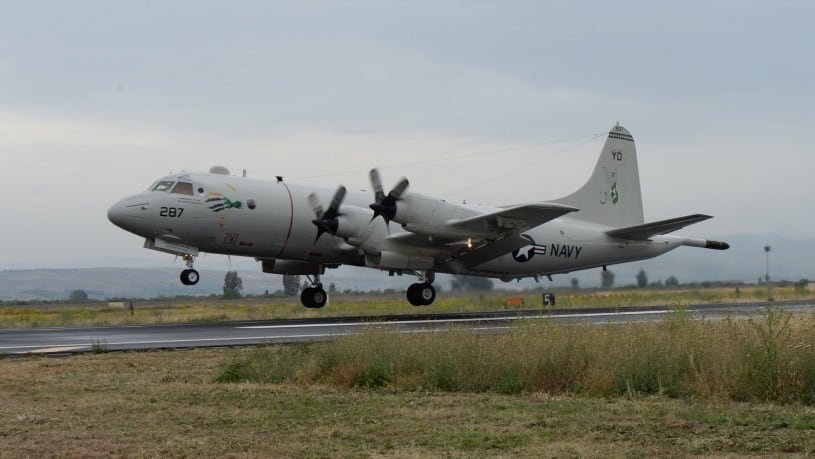
A U.S. Navy P-3 Orion equipped with advanced maritime surveillance equipment takes off.
Photo Credit: U.S. NavyCommunication Specialist 1st Class Tony D. Curtis
To avoid these sensors, customized exhaust pipes on the narco subs move heat from the engine directly into the water instead of into the air. The latest narco subs have even been built from wood and fiber glass to avoid the magnetic sensors, and are often painted a shade of blue to blend in with the surroundings. Even when flying directly overhead, spotting a stationary sub during broad daylight can be difficult.
While drug cartels have been able to build select vessels capable of beating state-of-the-art detection technology, the subs are still crude, unsafe crafts built in the jungles of South America.
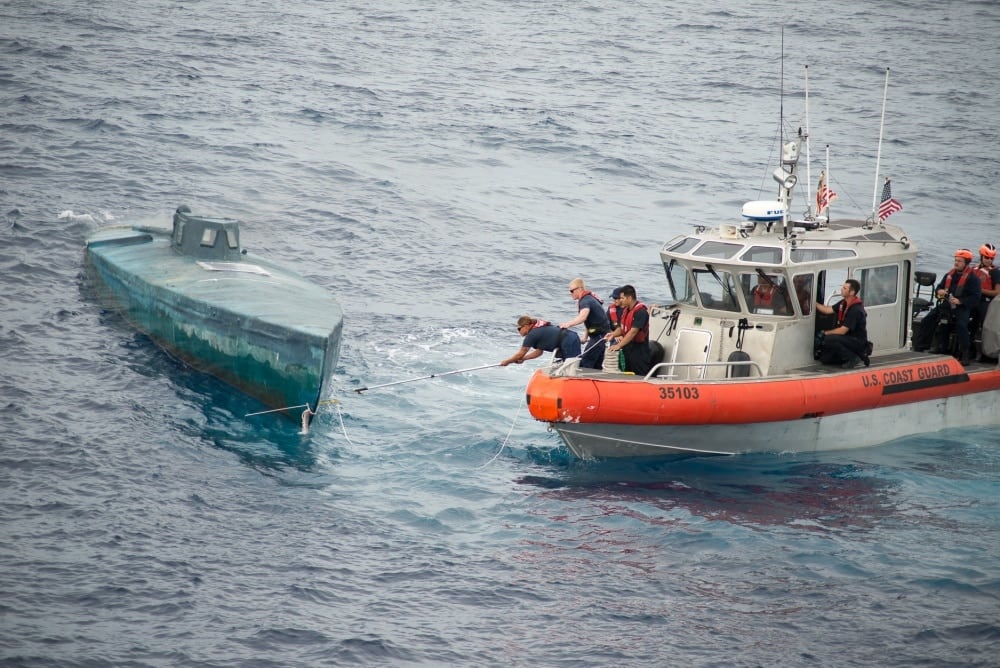
Coast Guard Cutter Stratton interdiction of Self-Propelled Semi Submersible (SPSS) in the Eastern Pacific, July 18, 2015.
Photo Credit: LaNola Stone/Coast Guard
"[Narco subs have] only got one purpose and they’re not built to any safety standards," said Moore. "They don’t have any safety equipment on board, they don’t have any running lights or navigation equipment, so they’re incredibly dangerous."
Being semi-submersible, waves crash over the tops of the subs, creating a risk of filling potential openings with water. The light-weight vessels are also designed to sink rapidly, with hatches that fill the compartment with water in order to scuttle the subs if law enforcement is near. In those scenarios, the crew is meant to escape from the contraband they’re transporting. The risk of sinking unintentionally, though, creates a great risk for the crew.
In addition to the P-3 Orions that work with cutters like the Stratton, the Coast Guard has its own new tools. Radar, infrared video, and helicopter sorties are all capabilities of individual cutters, but the latest new tool aboard the Stratton is the ScanEagle surveillance drone.
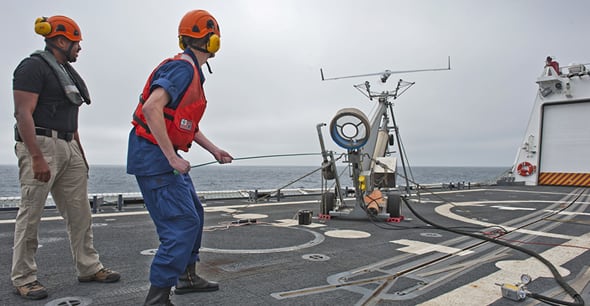
Petty Officer 3rd Class John Cartwright released the ScanEagle unmanned fixed-wing aerial vehicle from the deck of cutter Stratton in 2012. The Coast Guard is moving forward with plans to adopt a UAV for use on national security cutters.
Photo Credit: Petty Officer 2nd Class Luke Clayton/U.S. Coast Guard
Launched from a catapult on the deck of the Stratton, the drone can locate targets of interest — or TOIs — miles away. Once the target is located, the Stratton's helicopter and go-fast boats race toward the target.
Beyond the financial impact on transnational organized crime networks, human intelligence is collected from narco sub crews and other smuggling vessels, helping the Coast Guard and JIATF South locate future smugglers.
"Since 2002, information obtained from suspects apprehended by the Coast Guard contributed to the arrest and extradition of more than 75 percent of drug kingpins," said Brzuska. "Furthermore, we apprehended a record 585 suspected smugglers in fiscal year 2016."
Intelligence gathered from interrogations of those 585 smugglers is already being used by the Coast Guard and its JIATF South partners. On top of the Stratton’s 4,000 pound seizures this year, the cutters Mohawk, Spencer and Sherman helped seize an additional 8,000 pounds of cocaine, combined values just shy of $400 million.
With few exceptions, the majority of the smugglers apprehended by the Coast Guard aboard narco subs and other vessels are brought back to the U.S. for prosecution, regardless of their nationality, according to Moore. The Department of Justice has over a 90 percent success rate prosecuting those smugglers.
Once drugs are seized, the cutters carry the contraband back with them, keeping samples to process as evidence.
"We actually bring it back into the United States, deliver it to the [Drug Enforcement Administration] who end up taking it an incinerating it," said Moore.
In the past decade, the Coast Guard has seized close to 3 million pounds of cocaine. It has also intercepted large shipments of marijuana, heroin, MDMA, crystal methamphetamine and counterfeit pharmaceuticals, the bulk of which is bound for the United States. In addition to the public health crisis associated with ongoing opioid abuse, the U.S. accounts for one in every five drug-related deaths globally, according to the Coast Guard.
The 418-foot Stratton, one of the Coast Guard's newest national security cutters, is based in Alameda, California, with Moore serving as its commander since 2015. After graduating from the U.S. Coast Guard Academy in 1992, Moore held various posts on several other cutters and at Coast Guard Headquarters.
JIATF South is based at the Naval Air Station Key West, Florida. As a parth of SOUTHCOM, the task force has a patrol area of over 42 million square miles. The task force was formed in 1994, according to the National Defense University.
The "Outlaw Tech" episode featuring Captain Moore and Stratton’s 2015 narco sub bust will have an encore airing on the Science Channel Wednesday, May 17 at 8 p.m.



